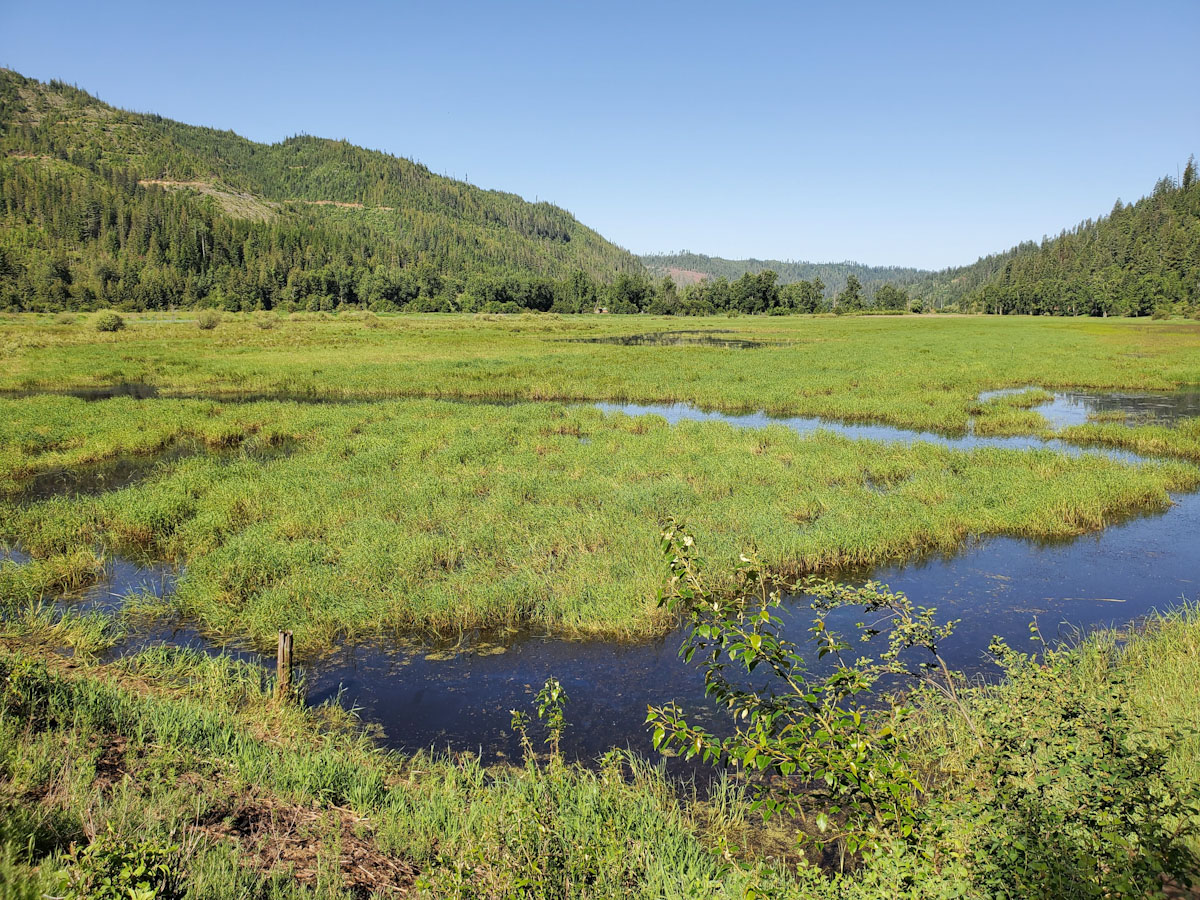Plants, wildlife benefit from DU, Avista project along Idaho river
DU's ongoing partnership with Avista is bringing a stretch of the Shadowy St. Joe River back to life
DU's ongoing partnership with Avista is bringing a stretch of the Shadowy St. Joe River back to life

Native vegetation and wildlife are returning to a 60-acre stretch of Idaho’s Shadowy St. Joe River, thanks to Ducks Unlimited’s ongoing partnership with Avista.
For years, Ducks Unlimited has worked with Avista to re-establish wetlands and riparian areas along the river near St. Maries, Idaho. The project site was ditched and drained years ago for farming. The site was once a log landing, where logs were stacked before they were floated down river to lumber mills.
In 2013, DU restored wetlands and seeded native species in wet meadows and uplands to replace the hay crop previously grown there. DU also planted trees and shrubs. Unfortunately, over the years, noxious weeds re-took a seven-acre area, including the riparian zone closest to the riverbank. DU and Avista have spent the years since removing the invasive and non-native species and restoring native bunchgrass and forb cover.
DU also planted 1,664 trees and shrubs of 13 species, including cedar, cottonwood, quacking aspen, mountain alder, water birch, red osier dogwood, wild rose , elderberry, chokecherry, snowberry and ponderosa pine.
Avista technicians watered each tree and shrub weekly during the hot summer months of 2022, the first year after planting, to assist in their establishment. The seedlings are off to a great start with survival at 90% a year after planting. Watering will continue through 2023 as the seedlings continue to establish their roots. Throughout that process, DU and Avista avoided harming a native wet meadow species lying dormant under the invasive grasses and weeds. That plant, common camas, is a native perennial herb with a beautiful purple flower that blooms early in the summer. Camas grows from a bulb, which is a historically important food source for native tribes.
Plants aren’t the only species benefiting from the project. Commonly seen animals include beavers, muskrat, river otters, moose, deer and elk. More than 45 species of birds, including swans, wood ducks, cinnamon teal, ospreys, bald eagles and great blue herons, also have been spotted visiting the restoration site.
“It’s amazing what comes back to life on its own, when given the chance,” said Tina Blewett, Ducks Unlimited’s biologist for the region.
“It is exciting to see the success we are having here. Ducks Unlimited has been a fantastic partner. They have done an excellent job managing all aspects of this riparian restoration project,” said Rob Stephens, Avista’s restoration biologist.
DU will continue performing site inspections and is hiring a contractor to conduct follow-up weed-control activities through 2025. This site is managed in perpetuity by Avista as part of its wetlands and riparian restoration program to mitigate impacts associated with the Post Falls Dam.
Ducks Unlimited Inc. is the world's largest nonprofit organization dedicated to conserving North America's continually disappearing wetlands. Established in 1937, Ducks Unlimited has conserved 16 million acres in the U.S. and more than 35,000 acres in Idaho.
Media Contact:
Ryan Sabalow, Western Region - Communications Coordinator
(916) 805-1210
rsabalow@ducks.org
Ducks Unlimited uses cookies to enhance your browsing experience, optimize site functionality, analyze traffic, and deliver personalized advertising through third parties. By continuing to use this site, you agree to our use of cookies. View Privacy Policy